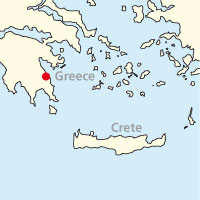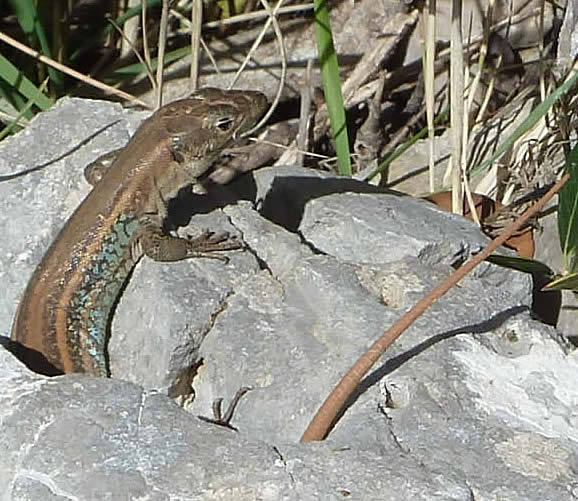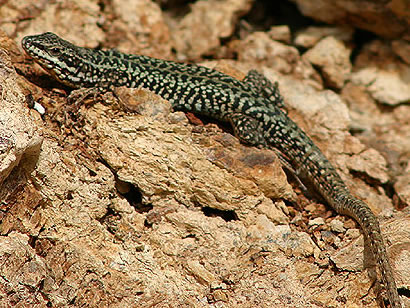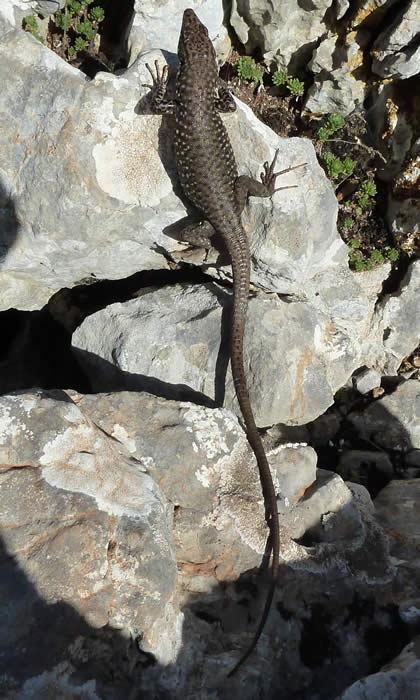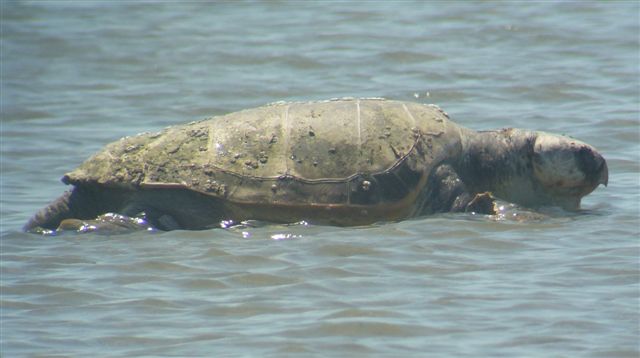Photospot: Peloponnese lizards
The Peloponnese peninsula in Greece is unusual in having two endemic lizard species (found only here). Happily, both can be common in the right habitat and are easily separated in the field.
For the Peloponnese wall lizard, think stripes. For the Greek rock lizard, think spots.
Peloponnese wall lizard Podarcis peloponnesiacus
One of the chunkiest wall lizards (body to 8.5cm) with strong stripes and extensive blue patches on well-marked males. The tail is shorter than the Greek rock lizard (up 15cm). Females are browner, but still striped; juveniles may have blue tails.
Lizards near the coast are likely to be Peloponnese wall lizards, but they are also found in the hills. Note the strong blue markings on the flank. |
 |
Greek rock lizard Lacerta graeca
A flattened body (to 8cm), a long head and very long tail (up to 18cm). It’s dark grey or brown, sometimes bluish in males, and the spots can be blue, too. The tail is plain. The underside is yellow or orange, with some spots. The female is less spotty but, as for the male, is not striped.
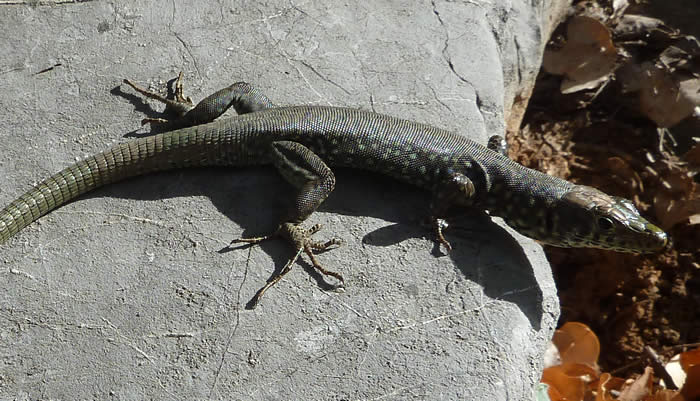
These two close-up photos of Greek rock lizard chop off the tail: see right to see the long tail.
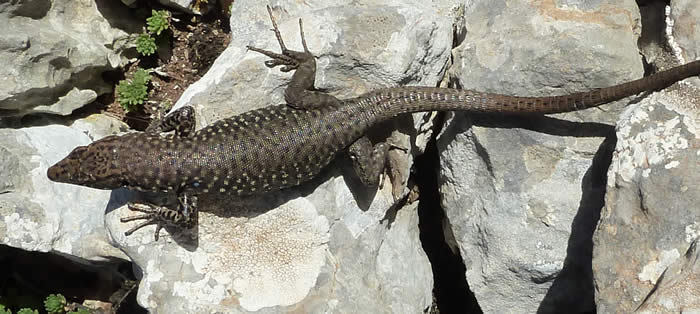
They are locally common in higher areas, especially above 400m. They climb well on rocks, trees and walls.
A different, delightfully spotted Greek rock lizard (Morag McGrath).
More nature notes . . . . . . . . . . . . . . . . . . . . . . . . . . . . . . . . . . Peloponnese


